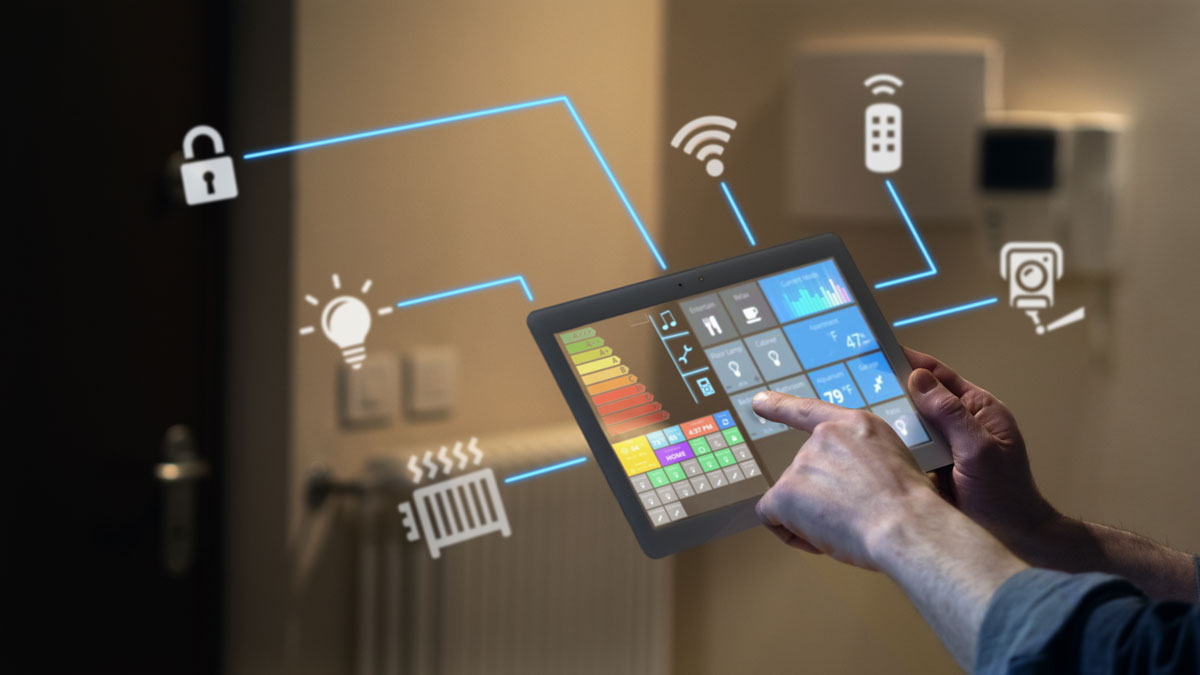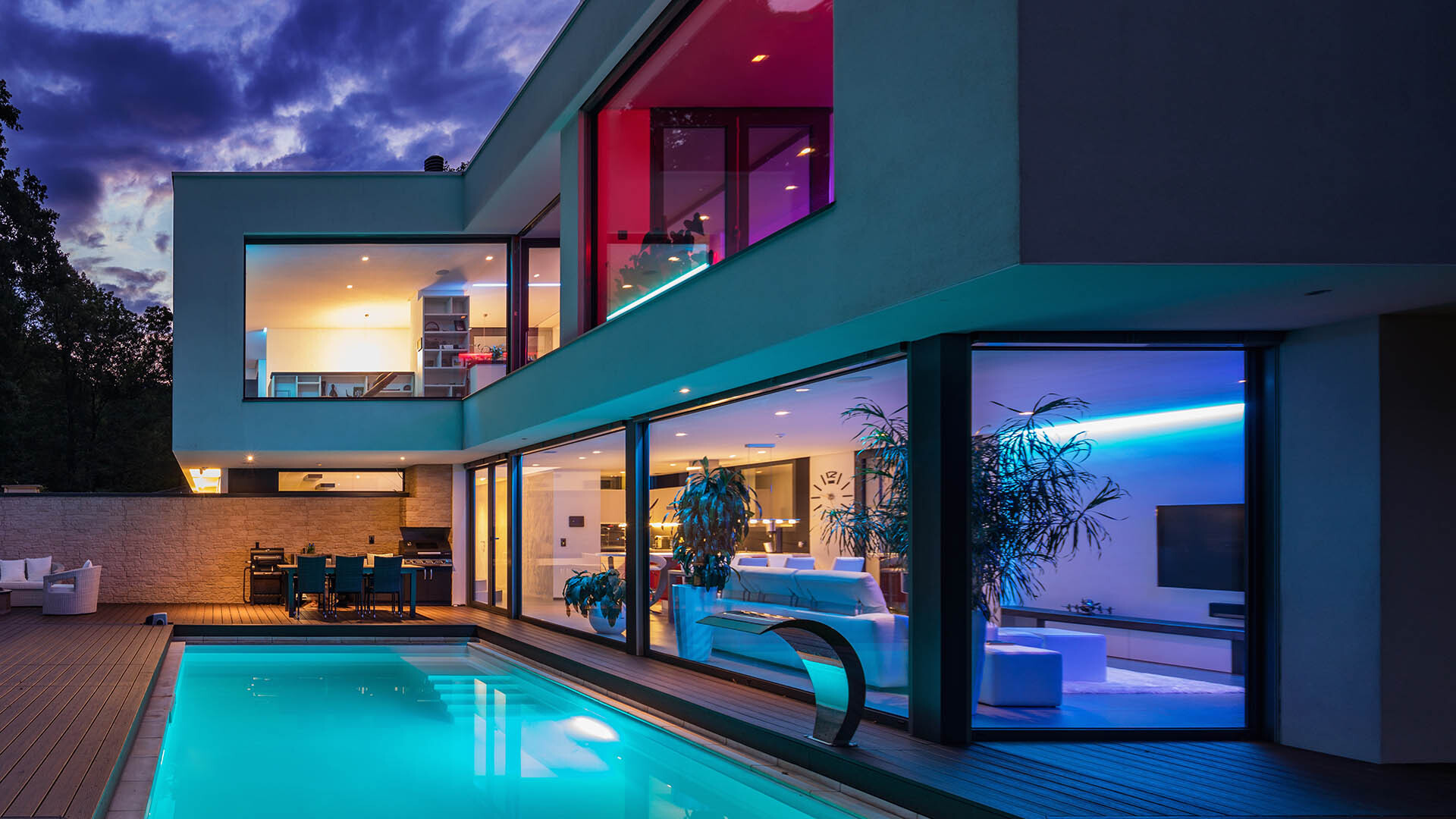In recent years, the rise of smart home devices has transformed the way we think about home security. These innovative technologies not only provide convenience but also enhance safety measures in our daily lives. From smart locks and surveillance cameras to intelligent lighting systems, these devices work together to create a seamless and secure living environment.
Smart home devices

The concept of smart homes refers to the integration of technology within residential spaces, enabling homeowners to control various aspects of their homes remotely or automatically. With the advancement of Internet of Things (IoT) technologies, the market for smart home devices has exploded, offering an array of solutions aimed at enhancing security.
The Advantages of Smart Home Devices
One of the primary advantages of smart home devices is the level of convenience they bring to homeowners. Imagine being able to lock your doors, adjust your thermostat, and monitor your home all from your smartphone, no matter where you are in the world. This capability significantly reduces the anxiety that comes with leaving your home unattended.
Moreover, many of these devices come equipped with advanced features such as real-time alerts and notifications. For instance, if a security camera detects movement outside your house while you’re away, it can send an immediate alert to your phone. Such features empower homeowners to take action quickly, whether that means contacting authorities or simply checking in on what might be happening.
Another great benefit is the ability to integrate multiple devices into a single ecosystem, allowing for synchronized operation. For example, you can program your smart lights to turn on automatically when your smart lock is engaged. This kind of automation can act as a strong deterrent against potential intruders, as they may see signs of activity within the home even when it is unoccupied.
Types of Smart Home Devices
Smart home devices cover a wide range of products, each designed to serve specific purposes related to convenience and security.
Security cameras are among the most essential smart home devices for monitoring and protecting your property. Modern options offer high-definition video, night vision, and two-way audio capabilities, enabling real-time communication with anyone who approaches your door.
Smart locks are another key component, replacing traditional locks with keypad entry systems or mobile app controls. These locks often come with features like temporary access codes for guests or delivery personnel, providing flexibility while maintaining security.
Home automation hubs serve as the central command for your smart home ecosystem. They allow different devices to communicate with one another and can be managed through a single application. This simplifies the process of ensuring that all your security measures are operating simultaneously.
Smart alarm systems add another layer of protection by alerting homeowners to unusual activity and providing emergency notifications. These can be customized to suit individual needs, from basic motion detection to comprehensive systems that include glass break sensors and smoke detectors.
Integration with Other Technologies
The beauty of smart home devices lies in their ability to seamlessly integrate with other technologies. Many people now use voice assistants like Amazon Alexa, Google Assistant, or Apple’s Siri to control their smart devices hands-free. This integration adds an extra level of accessibility and user-friendliness, making smart technology available to a wider audience.
For instance, homeowners can ask their voice assistant to lock the doors or check the status of their security system, removing the need for manual checks. Furthermore, these assistants can learn routines over time, automating security measures according to established patterns. For example, if you consistently leave for work at 8 AM, your smart system can automatically activate the security alarm at that time.
Additionally, the data collected by smart home devices can lead to improved security strategies. Analyzing patterns of usage can help identify potential vulnerabilities. For instance, if your security camera frequently shows movement during certain hours, you can adjust your routines or plan for additional surveillance during those times.
Best smart home gadgets for convenience and security

When considering enhancements to security through smart home devices, several standout gadgets can significantly improve both safety and efficiency.
Smart Security Cameras
Smart security cameras have become the cornerstone of home security systems. Unlike traditional security cameras, smart versions can connect to Wi-Fi networks, allowing users to access live feeds from their smartphones or computers.
These cameras often feature advanced functionalities such as motion detection, facial recognition, and cloud storage options. You can receive alerts when movement occurs, which provides peace of mind that any unusual activity will not go unnoticed.
Some models even come equipped with night vision capabilities, enabling effective monitoring after dark. Additionally, having the option to communicate through two-way audio allows homeowners to interact with visitors or suspicious individuals without opening the door—an essential security measure.
For added convenience, many smart cameras offer integration with other smart home devices, allowing for automated responses. For example, if your smart camera detects someone on your property, you could program your smart lights to turn on, creating the illusion that someone is home.
Smart Locks
Smart locks represent a significant shift in how we approach home security. Gone are the days of fumbling for keys; modern smart locks can be controlled via smartphones, keypads, or even biometric recognition like fingerprint scanning.
This technology allows homeowners to grant access to family members, friends, or maintenance workers without needing to be physically present. Temporary e-keys can be created and revoked easily, making them ideal for short-term visitors.
Furthermore, many smart locks come with features that log every time someone enters or exits your home. This tracking capability can provide insights into household activity, particularly useful for parents keeping tabs on their children’s comings and goings.
Integrating smart locks with other smart home devices can amplify their effectiveness. For instance, linking a smart lock to your security camera means you can receive notifications whenever someone unlocks the door, adding an extra layer of awareness.
Smart Alarm Systems
An effective smart alarm system acts as both a deterrent and an immediate response solution. These systems can be more efficient than traditional alarms due to their ability to send instant alerts to your smartphone or other connected devices.
Newer models are increasingly sophisticated, featuring sensors that detect everything from motion and sound to environmental changes like smoke or carbon monoxide. By providing single-pane access to all alerts, these systems ensure that you stay informed about your home’s safety.
For optimal performance, many smart alarm systems can be integrated with existing smart home devices. You can program your thermostat to lower the temperature if a smoke alarm goes off or have your outdoor lights flash as a visual alert.
Additionally, the proactive nature of these smart systems allows for remote monitoring. Whether you’re on vacation or at work, you can ensure your home is monitored continuously, bringing a significant sense of relief no matter how far you are from home.
Smart Lighting Systems
Smart lighting systems play a dual role in enhancing home security and adding convenience to everyday life. Strategically placed smart lights can illuminate pathways, driveways, and entrances, helping to deter potential burglars by making it harder for them to go unnoticed.
Many smart lights can be programmed to mimic your usual habits, turning on and off at specific times to create the appearance of occupancy. This deters criminals who may be watching for signs that a home is vacant.
Moreover, smart lighting systems can be controlled remotely through apps or voice commands. If you’re away on vacation, the ability to turn lights on and off at will can create a powerful illusion of being home—further discouraging unwanted visitors.
Integration with other smart home devices enhances functionality. For instance, connecting your smart lighting to a motion sensor means that lights can automatically illuminate if someone approaches your home, providing visibility and safety.
Conclusion
As we’ve explored in this article, smart home devices are redefining the landscape of home security. Through the innovation of technology, homeowners are better equipped to protect their properties and loved ones. With the best smart home gadgets for convenience and security, including smart cameras, locks, alarm systems, and lighting, individuals can enhance their home’s safety while enjoying unparalleled convenience.
Incorporating these devices fosters a more secure environment, empowering homeowners with control and peace of mind. As smart home technology evolves, so too will the ways in which we safeguard our homes, making our living spaces safer, smarter, and more connected than ever before. The future looks promising, and embracing these advancements is crucial for anyone looking to enhance their security through modern technology.


